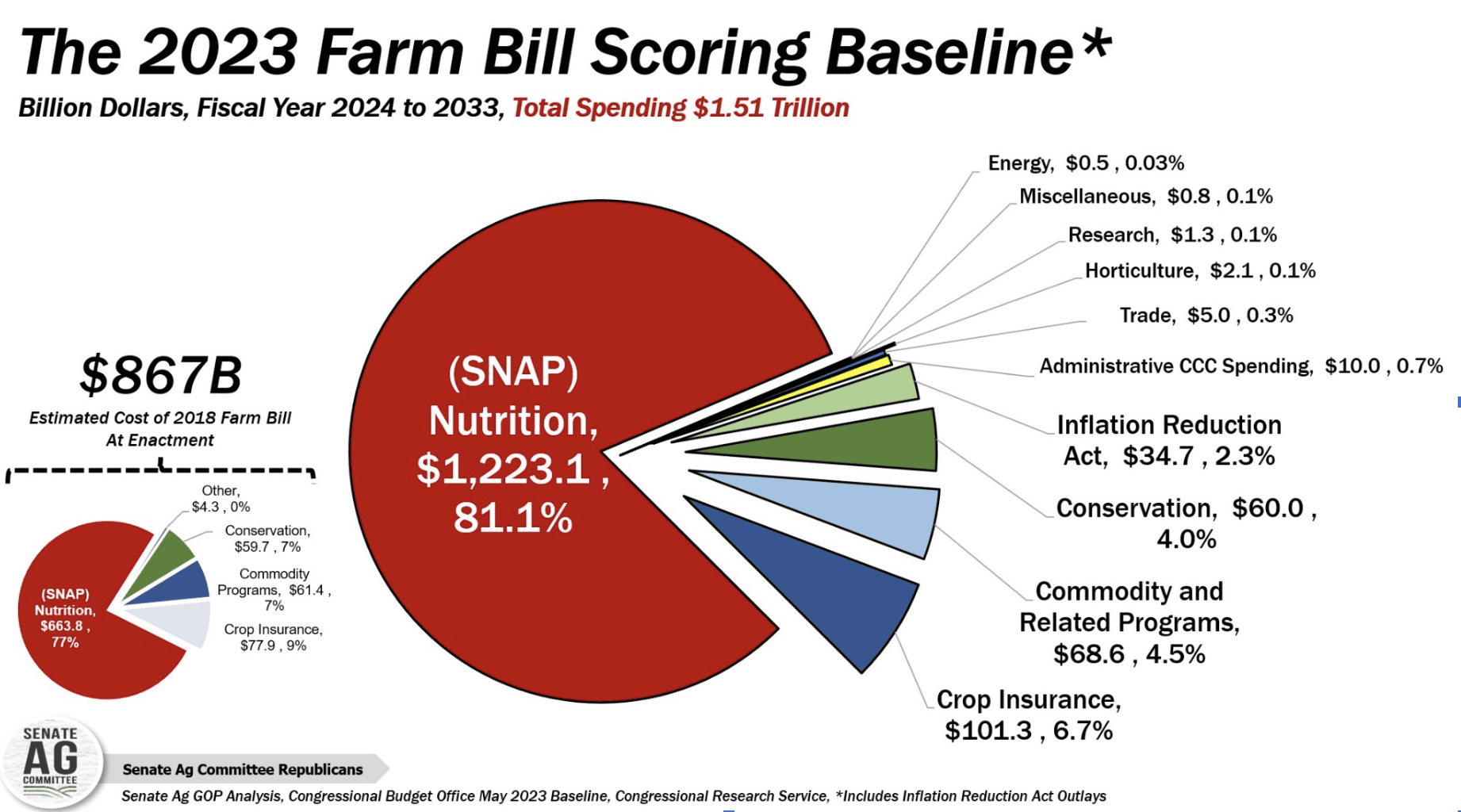Farm Bill and Human Health
The Farm Bill has the single largest policy-based influence on nutrition and human health in the United States. Taxpayers will pay upwards of $1.51 Trillion on agriculture and nutrition over the next 5 years under the new Farm Bill. At the same time, taxpayers will also be subjected to the $4.1 Trillion annual cost in healthcare expenses in the United States mostly due to chronic disease. That chronic disease would be stemmed if non-toxic, regenerative organic food practices were subsidized rather than chemical agricultural practices that are ruining our health and land.
Farm Bill Overview
The Farm Bill is a package of legislation that has an enormous, direct impact on farmers, how food is grown, what types of foods are grown, and how food is provided to the food insecure. The Farm Bill is a five-year law that governs an array of agriculture and food programs. The last Farm Bill was enacted in 2018, and was due to be renewed in 2023. Congress has been slow to agree on content, so as of 2025 we are still waiting for a new Farm Bill.
Drafting the Farm Bill involves many different parties with specific interests, but ultimately falls under the tasks executed by members of Congress who sit on the Senate and House Committees on Agriculture, Nutrition, and Forestry. Once drafted, the Bill goes to vote in both houses of Congress.
This chart summarizes both the 2018 Farm Bill and the projected 2024 Farm Bill spending.

Farm Subsidies
Current farm policy favors large, industrial-scale agriculture and commodity crops. GMO cotton, corn, soybeans, as well as other commodity crops, receive federal crop insurance protection that guarantees a minimum income even if commodity prices fall or disaster strikes. Those subsidies are not available for small-scale farmers or farmers growing non-commodity, "specialty" crops like fruits and vegetables. In subsidizing the chemical farming methods, the federal government is continuing to support the junk fed to animals in CAFOs and the harmful ingredients included in human food.
The current farm subsidy plan perpetuates farming practices that utilize toxic chemicals that harm the soil. If we are to arrive at a farming system that restores health to both the soil and our bodies, the Farm Bill must improve access to a safety net for smaller producers working in organic regenerative farming. This change is the only way the playing field will be levelled for family and small farmers.
Challenges and Action
Conventional and commodity-focussed farming groups are highly organized and wealthy. Regenerative organic farming groups are highly fragmented and lack a unified voice. In order to exact influence in policy, a unified voice will need to emerge in support of agriculture that supports soil and human health.
There are steps you can take to influence both policy and public sentiment. When talking about the Farm Bill or public policy, actively connect the cost of chemical farming to the cost of healthcare. The chemical farming practices and chronic disease epidemic are intrinsically tied. Second, contact your Senators and Congresspeople to provide your voice of support to pass legislation that will benefit small farmers and regenerative organic farming.
Change will only happen if enough people are talking about these issues among friends and around dinner tables.
